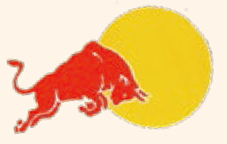In a recent case, Red Bull AG claimed that a trademark registered by Korean company Bullsone Co, Ltd should be invalidated due to the likelihood of confusion as to the source of the designated goods.(1)
The Japan Patent Office (JPO) Trial and Appeal Board rejected Red Bull's claims. However, the IP High Court overturned this decision and invalidated Bullsone's trademark registration. One of the reasons why the IP High Court overturned the JPO Trial and Appeal Board's decision was that it had a different stance on choosing the relevant trademarks to be considered when determining the well-known status of Red Bull's trademarks.
Bullsone (the defendant) registered a device mark (Figure 1)(2) in:
- Class 1 (detergent additives to gasoline, fuel-saving preparations, chemical additives to motor fuel and anti-tarnishing chemicals for windows, among other things);
- Class 3 (air fresheners and deodorants for automobiles, windscreen-cleaning liquids, automobile cleaners and automobile polishes, among other things);
- Class 4 (dust-laying compositions, dust-removing preparations, lubricants and dust-binding compositions for sweeping, among other things); and
- Class 5 (deodorants – other than for human beings and animals – insect repellents, insect repellent incense and air purifying preparations, among other things).

Figure 1
Red Bull (the plaintiff) used its RED BULL word marks and the following bull device marks (Figures 2, 3 and 4) on various goods:

Figure 2

Figure 3 (the cited mark)

Figure 4
Of the above bull device marks, the mark which the JPO Trial and Appeal Board and the IP High Court cited against the defendant's mark was Figure 3 – the "single bull device facing left". Both the JPO Trial and Appeal Board and the IP High Court determined the well-known status of Figure 3 and examined the mark's similarity to the defendant's mark.
JPO Trial and Appeal Board decision
The issues determined by the JPO Trial and Appeal Board(3) were:
- the likelihood of confusion – under Article 4(1)(xv) of the Trademark Act, a mark cannot be registered if it is likely to cause confusion with goods pertaining to another party's business;
- similarity to a trademark which is well known among consumers in Japan or abroad – under Article 4(1)(xix) of the act, a mark cannot be registered if it is identical or similar to a trademark which is well known among consumers in Japan or abroad as an indicator of goods or services pertaining to a business of another party and if such trademark is used for unfair purposes (eg, to gain unfair profits or cause damage to the other party); and
- the likelihood of damaging public policy – under Article 4(1)(vii) of the act, a mark cannot be registered if there is a likelihood that it will damage public policy.
The JPO Trial and Appeal Board held that none of the above issues applied to the defendant's registration. This update focuses on the issue of likelihood of confusion (Article 4(1)(xv) of the act).
Well-known status of cited mark
First, the JPO Trial and Appeal Board clarified its position on choosing the relevant trademark to be considered when determining the well-known status of the cited mark (ie, Figure 3 – single bull facing left device mark). The JPO Trial and Appeal Board stated that the "double bull device" (Figure 2) and the "single bull device facing right" (Figure 4), as well as other marks used by the plaintiff, were different from the cited mark and therefore should not be considered when determining the cited mark's well-known status.
Based on this position, the board pointed out that:
- as the cited mark was mainly used in pairs with the single bull facing right device mark, it could not be held that the plaintiff was using the cited mark alone; and
- while the evidence of use showed that the cited mark was predominantly used as a logo to indicate the sponsor of motor races, the spectators of the races and readers of magazines, among others, would not consider that the mark was used as a trademark to identify the origin of the plaintiff's goods and services.
As such, the board concluded that the cited mark had not gained well-known status or fame at the time of the defendant's application and the granting of its mark.
Similarity of marks
The JPO Trial and Appeal Board acknowledged that the defendant's mark and the cited mark were similar, as both comprised a red-coloured bull with its front legs folded inside, its back legs extended and an S-shaped fluttering tail, facing left in front of a background figure.
However, the JPO Trial and Appeal Board pointed out that the marks also had differences (eg, with regard to the balance of the arrangement of the bull and the background figure and whether the bull had a black outline or was depicted as a silhouette) and concluded that the number of overall similarities between the marks was low.
Likelihood of confusion
The JPO Trial and Appeal Board concluded that there was no likelihood of confusion, as, among other things:
- the cited mark had not gained well-known status or fame at the time of the defendant's application and the granting of its mark; and
- the number of overall similarities between the defendant's mark and the cited mark was low.
As such, the board held that Article 4(1)(xv) of the act did not apply.
The issue determined by the IP High Court was the likelihood of confusion (under Article 4(1)(xv) of the act, a mark cannot be registered if it is likely to cause confusion with goods pertaining to another party's business).
Well-known status of cited mark
Contrary to the JPO Trial and Appeal Board, when determining the cited mark's well-known status, the IP High Court considered, among other things:
- the facts and evidence relating to the use of the double bull device mark (Figure 2); and
- the single bull facing right device mark (Figure 4).
The IP High Court held that:
- the double bull device mark (Figure 2) had been well known among traders and consumers in Japan as a mark representing the plaintiff's goods when the defendant's application had been filed and its mark had been granted;
- the cited mark (single bull facing left device mark) was a component of the double bull device mark and, due to the fame and high level of recognition of the double bull device mark, consumers would easily recognise that the cited mark was part of the well-known double bull device mark; and
- there were many examples of the cited mark being used on its own, separate from the double bull device mark.
Following its evaluation of the various material showing use of the RED BULL word and device marks, the IP High Court held that the cited mark (single bull facing left device mark) should also be considered to have been well known among traders and consumers in Japan since the defendant's application and the granting of its mark – not only in the energy drinks (beverages) field, but also in automobile-related fields.
In response to the defendant's argument that the material submitted by the plaintiff (eg, its brand rankings, advertisement expenditure and market share of energy drinks) concerned the double bull device and the RED BULL word marks and should therefore be disregarded when determining the well-known status of the cited mark (single bull device facing left), the IP High Court reiterated that:
- consumers who came across the cited mark would easily recognise that it was part of the well-known double bull device mark; and
- there were examples of the cited mark being used separately from the double bull device mark on Red Bull Racing cars and helmets.
The IP High Court also pointed out that the plaintiff had granted a significant number of licences to use its marks on various goods, including those relating to automobiles. As these goods were widely sold through licensees, it could not be held that the cited mark was used merely as a logo to indicate the sponsor of a motor race, as it was also used as a trademark to identify the origin of the plaintiff's goods and services. In light of these facts, the IP High Court found that both the double bull device mark and the cited mark single bull facing left device mark should be considered well known among traders and consumers in automobile-related fields.
Similarity of marks
The IP High Court acknowledged that although the defendant's mark and the cited mark had the same basic configuration, there were also differences in the detailed appearances of the marks. Nonetheless, when comparing the overall structure of the marks (eg, the plain, yellow-coloured background figure and the red-coloured bull thrusting out its horn in a dynamic posture while facing left in front of the background figure), the IP High Court found that the level of similarity between the defendant's mark and the cited mark was relatively high.
Likelihood of confusion
The IP High Court held that:
- the defendant's designated goods included automobile-related goods and were therefore of relevance to the automobile-related fields in which the plaintiff's cited mark was considered well known;
- the main consumers of automobile-related goods are general consumers, such as car owners and automobile enthusiasts. This includes individuals without an accurate or detailed knowledge of trademarks and brands who therefore may purchase goods without taking a close look at the marks; and
- the plaintiff had granted a significant number of licences to various companies allowing them to use its marks, including the cited mark, and a variety of goods bearing the plaintiff's marks were being sold in various fields, including automobile-related fields.
In light of the above, the IP High Court found that there was a likelihood of confusion as to the source of the goods and whether the defendant was economically or organisationally linked to the plaintiff. It concluded that Article 4(1)(xv) of the Trademark Act should be applied and overturned the JPO Trial and Appeal Board's decision. The defendant's registration was thus invalidated.
A notable point in this case was the difference in position taken by the JPO Trial and Appeal Board and the IP High Court with regard to the relevant trademarks and the evidence to be considered when determining the well-known status of the cited mark (the single bull facing left device mark). While the JPO Trial and Appeal Board took a limited stance and disregarded the facts and evidence relating to the double bull device mark and the single bull facing right device mark, the IP High Court took a broader approach and also considered the facts and evidence regarding the use of these marks.
The JPO Trial and Appeal Board's approach is more in line with the usual method and criteria for determining a mark's well-known status. Generally speaking, when determining whether a mark is well known among consumers, the facts and evidence which should be considered are those pertaining to the subject mark; facts and evidence pertaining to other marks is usually irrelevant. However, when determining the cited mark's well-known status in this particular case, the IP High Court:
- took a closer look at the actual circumstances and the perception of consumers (eg, the fact that the consumers would easily recognise the cited mark (the single bull facing left device mark was part of the well-known double bull device mark); and
- considered the facts and material relating to marks other than the cited mark.
Although the IP High Court's approach cannot be easily generalised, it is a notable example of determining well-known status and recognising fame in Japan.
For further information on this topic please contact Chisako Yagi at Nishimura & Asahi by telephone (+81 3 6250 6200) or email ([email protected]). The Nishimura & Asahi website can be accessed at www.jurists.co.jp.
Endnotes
(1) IP High Court, 2017 (gyo-ke) 10080, judgment issued on December 25 2017.
(2) Registration Number: 5664585; Registration Date: April 18 2014.
(3) JPO Trial and Appeal Board, Invalidation 2015-890100.
This article was first published by the International Law Office, a premium online legal update service for major companies and law firms worldwide. Register for a free subscription.




